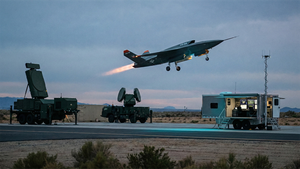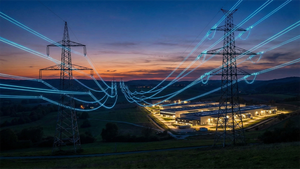Tokenization: Revolutionizing Ownership & Trading - Accessible, transparent, and liquid assets in global markets.
(PRUnderground) March 14th, 2024

The Norstar Group is spearheading the tokenization revolution, a pivotal shift that promises to redefine asset trading and ownership on a global scale. This innovative approach leverages blockchain technology to offer maximized access and fractional ownership, making real-time, global trading of virtually any asset a reality. With a focus on increasing liquidity, enhancing transparency, and reducing costs, Norstar is unlocking the potential of previously illiquid assets and paving the way for a new era of digital finance. Through our expertise in blockchain and digital assets, The Norstar Group is setting the standard for the future of asset tokenization, enabling a more accessible, efficient, and transparent global marketplace. Read on to discover the insights in our latest report, “Tokenize Or Be Tokenized: The Asset Digitization Ultimatum,” and understand why embracing tokenization is not just an option, but a necessity for future success.
Tokenization is ushering in a new era – one where maximized access and fractional ownership allow virtually any asset to become easily tradable in real-time global marketplaces. This transition promises to increase liquidity, improve transparency and accountability, reduce transaction costs and frictions, and unlock trillions in current dormant value across industries.
In simple terms, tokenization refers to the process of representing assets on digital ledgers called blockchains. This is accomplished by issuing tokens – digital representations of ownership rights, values, or status – which can be effortlessly exchanged between parties without traditional intermediaries. Beyond pioneered use cases like cryptocurrencies, innovators are finding and targeting new fits across previously analog and illiquid assets.
According to digital asset manager 21.co, the market for tokenized assets could reach $10 trillion in a bull case or $3.5 trillion conservatively by 2030. Crypto is currently undergoing a maturation phase while increasingly integrating with traditional financial infrastructure. However, regulatory restrictions and lack of standards pose challenges for mainstream tokenization.
Digital dollars, also known as stablecoins pegged to the U.S. dollar, represent the “first successful tokenization implementation,” 21.co analysts said. These currently comprise 97% of tokenized assets. But other asset types like bonds saw over 450% growth this year as interest rates surged.
Real estate, pharmaceutical patents, wireless spectrum licenses, carbon offsets, manufacturing machinery, rare art – these comprise just a sampling of resources attracting tokenization today to modernize aging ownership and exchange models. Managers realize that embedding assets in programmable distributed ledgers unlocks 24/7 instant tradeability, fractional investment, transparent tracking ability, automated smart contracts, and embedded royalties distribution.
Tokenized ecosystems also enable direct peer-to-peer and pool-based investment paired with automated incentive structures – attributes promising to democratize market access in ways unfathomable under legacy constructs. While progress has been muted on enterprise blockchain adoption, asset tokenization specifically is proving a likely driver for mainstream integration.
As blockchain scalability, compliance standards, risk management and supportive regulation improve with advances across both technology and infrastructure, the foundation for this tokenized future continues rapidly maturing. Virtually all assets will embrace this shift toward liquidity harvesting and community ownership enabled only recently through cryptographic innovation.
What Does Tokenization Even Mean?
Tokenization refers to the process of digitally representing real-world assets and rights on blockchains, distributed ledgers that allow the creation and exchange of digital assets. This conversion into tokenized format confers benefits inherent to blockchain technology like transparency, accessibility, programmability and rapid transferability.
The process involves issuing a digital token that acts as a share or fractional ownership representation of rights to an underlying asset. These can represent financial instruments like stocks, bonds and commodities or tangible property like real estate, art, patents and mineral rights. Ownership changes hands seamlessly as tokens are traded between parties without traditional intermediaries.
Now any asset with clear ownership rights stands ripe for tokenization optimized structures. This foundation sets the stage for a new generation of natively digital property placeholders conferring global accessibility.
The Benefits of Asset Tokenization
Asset tokenization on blockchains unlocks significant advantages over traditional ownership and investment formats. Key benefits driving adoption of tokenized property include:
Liquidity Enhancements
- 24/7 Global Trading: Tokenized assets can trade instantly 24 hours a day, 7 days a week on markets spanning the globe. This enables owners and investors to enter or exit positions far more flexibly.
- Fractional Ownership: Tokenized models allow assets to be split into smaller units, lowering the barrier to participate. Whereas high price points may have otherwise excluded lower-net-worth retail investors, now digital fractions increase accessibility.
Efficiency Improvements
- Rapid Settlement Finality: Ownership transfer and final settlement of tokenized transactions happens in minutes or seconds. This compares to days, weeks or even months required to settle complex traditional real world asset deals. The speed brings convergence closer toward digital native cryptocurrency models.
- Disintermediation / Automation: Blockchain automation and elimination of third-party middlemen across depositories, brokers and exchanges also drive efficiency by reducing paperwork, fees and opportunity costs.
Expanded Participation
- Sovereign Assets and Rights: Blockchain applications extend well beyond purely financial use cases to represent ownership of naturally scarce resources and licenses for spectrum or intellectual property yet to be defined in digital contexts. These stand to unlock fresh innovation pathways once marginal costs of transfer diminish through tokenization evolutionary adoption across groundbreaking early verticals.
In summary, asset digitization overcomes inefficiencies that have long plagued legacy markets still shackled by fragmented human bureaucracy in an increasingly seamless hyperconnected economy.
Read the full article on our blog: https://thenorstar.group/tokenize-or-be-tokenized-the-asset-digitization-ultimatum/
About The Norstar Group
The Norstar Group Is A Group Of People & Companies With One Purpose:
To Connect Investors With Opportunity
The post Tokenize or Be Tokenized: The Asset Digitization Ultimatum by the Norstar Group – Jason Nordlund first appeared on
Original Press Release.





